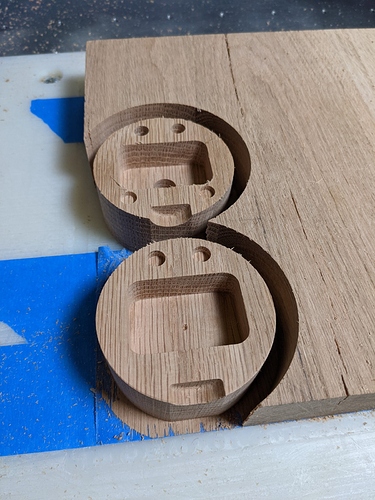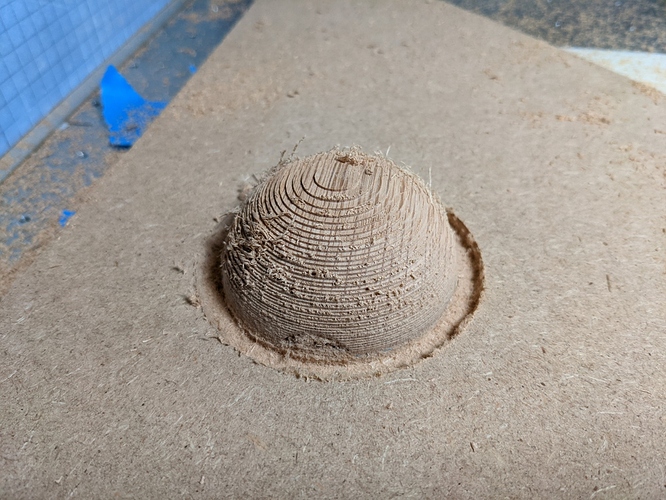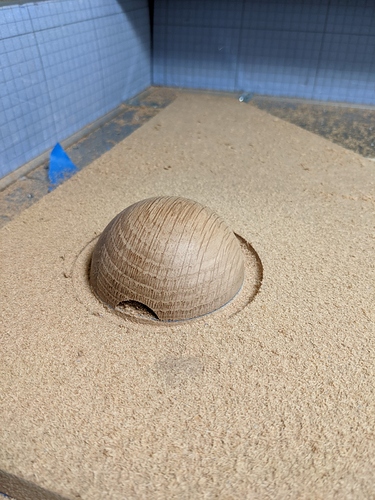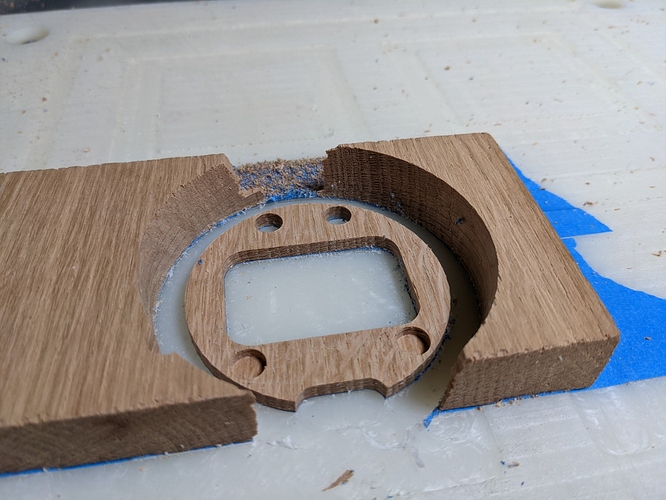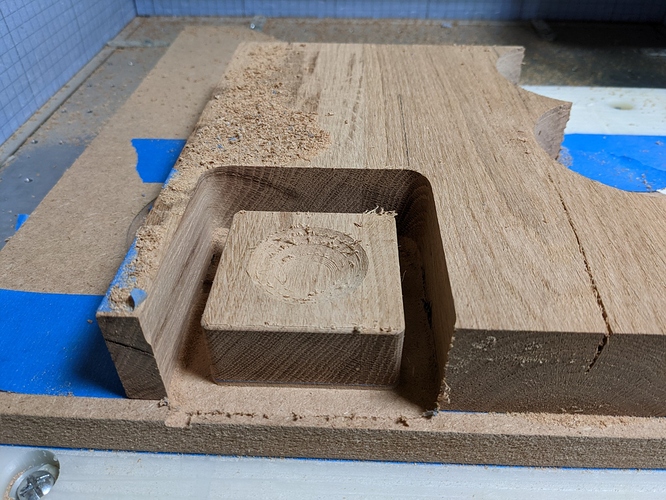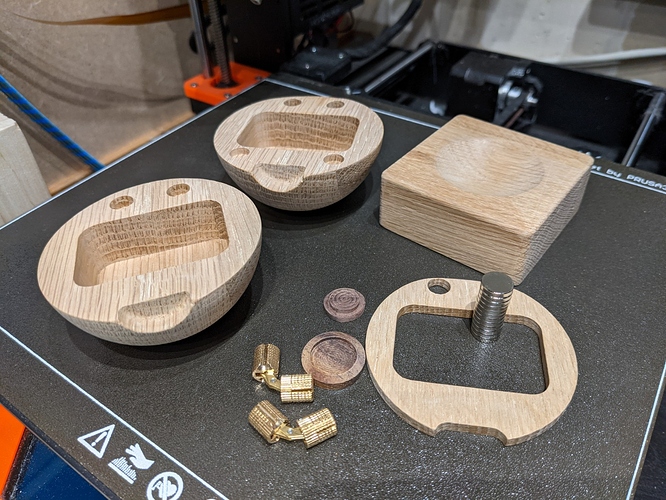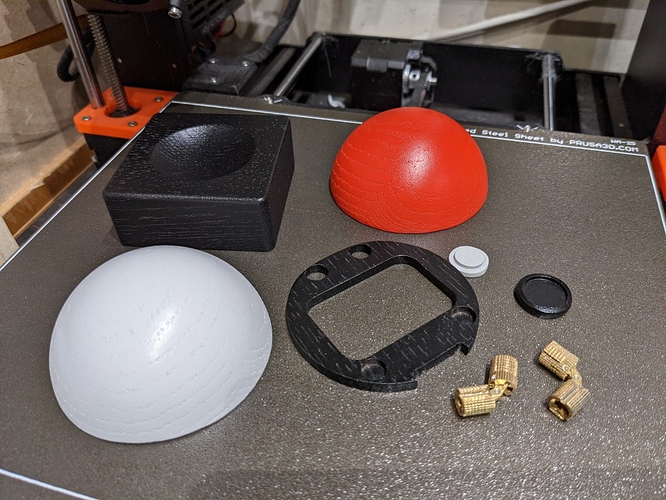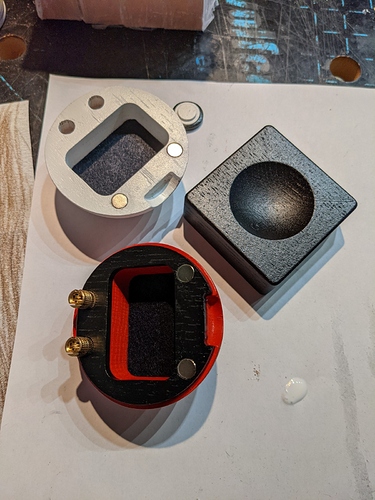I recently discovered that my godson is in his Pokemon phase (I was naive enough to think that by now Pokemon was just memorabilia for thirty-something folks, but apparently not!)
I remembered this video @wmoy published early this year, and thought this would be the perfect gift:
Luckily I had impulse-bought a 38mm slab of oak recently, which happened to be perfect to mill the two halves of the Pokeball.
The inside cuts first:
I then cut a jig pocket a few mm deep in MDF, flipped the parts and used tape&glue to hold them,
and ran the roughing cut
Some tearout, but not to worry, there was enough stock to leave at that point.
For the finishing toolpath (scallop toolpath at 0.2mm stepover) I used a 1/4" ballnose. I love how smooth it came out, very little sanding was necessary:
I also cut the middle section, and front knob (not shown),
And finally the base/stand (shown here before the finishing pass):
All ready for a dry fit test. The magnets go at the bottom of a pocket in the bottom half of the ball, and inside the base too, so that the ball snaps in place on the stand (great idea, Winston)
As much as I liked the wooden look, this is a gift for a child and I thought he would like it better if it had the real Pokeball colors, so I spray-painted the parts:
Much to my surprise, I got my tolerances just right on first try, and both the barrel hinges and the magnets fit perfectly:
I used felt fabric to line to bottom of the inner pocket, and conveniently hide the magnet pocket.
Assembly completed:
I then milled a name plaque out of 0.8mm brass, using a 1/32" endmill, to give it its final look:
I still need to spray some clear poly onto it to make it shinier and protect the paint.
Hopefully I will earn serious “cool godfather” points, we’ll see!
Anyway, a tip of my hat to Winston for the pretty cool idea.
